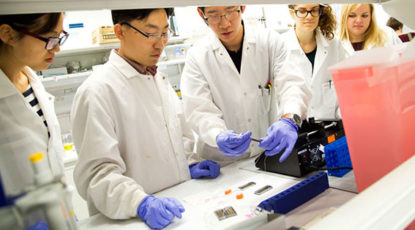-
These bubbles kill cancer
“Histotripsy” is a technique created by U-M engineers and doctors that harnesses soundwaves to attack cancer. It comes with the promise of few, if any side effects, a quick treatment time and, for patient Carrie Kumpel, the hope that it would completely destroy three spots that had formed on her liver.
-
Tumor-destroying sound waves receive FDA approval for liver treatment in humans
Technique developed at U-M provides a noninvasive alternative to surgery, chemotherapy, and radiation treatments for cancer. A human trial underway since 2021 at the Rogel Cancer Center and other locations demonstrates the technology’s ability to meet the testing’s primary effectiveness and safety targets.
-
Improvements in human genome databases offer a promising future for cancer research
A gene sequencing method called ribosome profiling has expanded our understanding of the human genome by identifying previously unknown protein coding regions. Also known as Ribo-seq, this method allows researchers to get a high-resolution snapshot of protein production in cells.
-
Cancer research: High risk = high reward
New Forbes Institute for Cancer Discovery aligns University experts across disciplines to fuel rapid development of technology and therapies.
-
Media Coverage of the University of Michigan: Feb. 2013
U-M ranks No. 12 among world’s top 100 universities; Helen Zell gives unprecedented $50 million to graduate writing program; U-M economists forecast job growth for southeast Michigan; Astronomers detect first evidence of dark matter in the universe; Research trials at U-M personalize cancer treatments; U-M’s I-Corps program aims to commercialize new ventures; Researchers seek to solve the problem of food insecurity.





